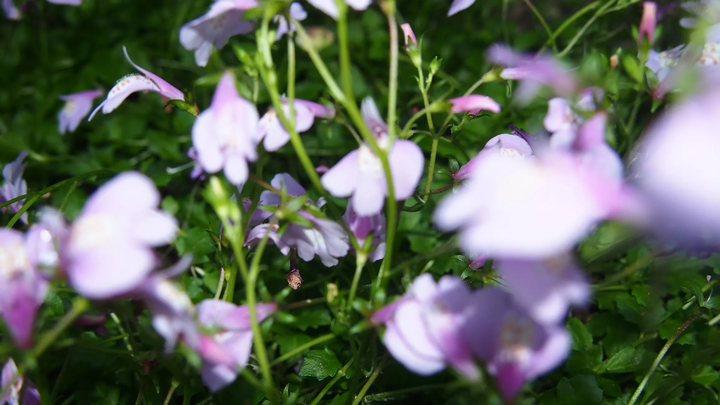Creeping Mazus (Mazus Reptans) is a low-growing, fast-spreading, semi-evergreen perennial that works well as a ground cover. It can tolerate footfall, bouncing back well, and feeling soft and light underfoot.
It's a popular alternative to grass or to fill in gaps in between flagstones or walls. It's also a favored addition in rock gardens and can help to reduce weed growth. This species looks lovely dangling over the edges of hanging baskets or containers.
In warmer climates, the dense, lush foliage remains green throughout the year. It also features clusters of beautiful little purple-blue flowers which blossom in late spring and summer.
Native to the Himalayas region of Asia, it's no surprise that Creeping Mazus can handle a wide range of weather conditions.
Botanical Name:
Mazus reptans
Common Name:
Creeping Mazus
Plant Type:
Low-growing perennial
Mature Size:
Up to 2 inches
Sun Exposure:
Full Sun/ Partial Shade
Soil Type:
Tolerates a variety, but must be well-drained
Soil pH:
Not particular
Bloom Time:
Summer
Flower Color:
Blue/lilac shades
Hardiness Zones:
5 to 8
Native Area:
Himalayas region

How to Grow Creeping Mazus
In the right conditions, Creeping Mazus is easy to grow and low maintenance. Preferring sun, moist conditions and warmth, it can still cope in cooler, shadier spots - just don't expect such rapid growth.
Light
Creeping Mazus sees rapid growth in full sun or partial shade positions. In very hot regions, partial shade may be better to protect it from the intense afternoon sunlight.
Soil
Creeping Mazus is a pretty robust plant and can grow in a variety of soils. It's preference, however, is for a fertile and loamy type.
If the soil is too hard-packed, the delicate rooting system will struggle to establish.
Water
This plant prefers to remain moist. Just make sure it isn't exposed to over-watering. Standing water can cause root rot.
Weekly watering, especially in hot and dry conditions will ensure your Creeping Mazus continues to flourish. If it stays dry too long, the foliage will begin to wilt
If you're worried about the soil drying out, you can add some mulch to help with moisture retention.
Temperature and Humidity
Creeping Mazus copes well across a wide range of temperatures. It prefers a warm and moist environment. If the temperatures are hot enough, the foliage will be evergreen.
It can survive in pretty low temperatures too. A hard frost will result in damage to the plant, referred to as "Winterkill". Usually, when the milder spring weather arrives, your Creeping Mazus will bounce back with new growth.
Fertilizer
You won't have to worry about feeding your Creeping Mazus if it's planted in a rich and fertile soil. An annual light feeding of a slow-release variety in the spring, however, could promote better growth for plants that are in drier, poorer quality soil.
Propagating Creeping Mazus
Cuttings or divisions are a great option if you want to increase the spread alongside existing established plants. It will mean the plants will blend in well without too much variation in size and shade.
If you plan to plant from divisions, make sure you do this in the spring when the new roots are growing.
You can take a cutting from a healthy stem at any time, but they should be planted out in the spring.
Pruning
It's very easy to prune back a low-ground cover like Creeping Mazus. It just needs to be mowed. This helps to promote healthy regrowth in the spring, but it can be done at any time of year that you feel it's getting too full.
Pruning shears can be used to trim back edges on borders or for over-drape in containers.
Growing From Seeds
If you're seeding a previously lawned area, make sure the grass and as much of the roots as possible are lifted. This will give your Creeping Mazus the best chance of thriving, as it can't outcompete the rooting system of grass.
Allow a decent amount of space between sown seeds too. Remember, this plant has a fast-spreading, close-to-the-surface, sprawling root system. You don't want the area to become overcrowded as this can impact on growth.